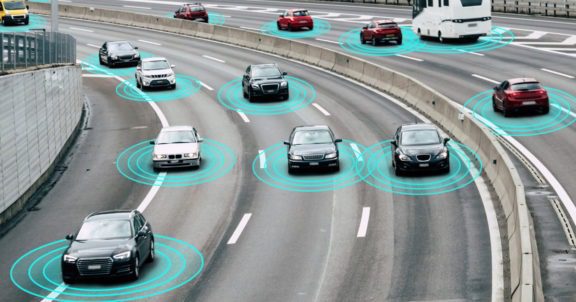Blog Post
What Fleet Managers Need to Know About V2X Technology
By Sara Sweeney
August 1, 2019

V2X technology is the all-encompassing term used to describe various over-the-air mechanisms for vehicle connectivity. Not all apply to corporate fleets, yet the technology is in such an evolutionary state, it’s important to gain a wide breadth of foundational knowledge to prepare for where it may lead in the future.
V2X Technology: Many Moving Parts
V2X is the umbrella term for wirelessly connecting vehicles with various entities including other vehicles, infrastructure, networks and more. A brief description of each is below:
-
Vehicle-To-Vehicle (V2V) technology facilitates the sharing of speed, location, direction and other data points between vehicles.
-
Vehicle-To-Infrastructure (V2I) technology sends traffic data such as safety, mobility and environmental advisories to vehicles.
-
Vehicle-To-Pedestrian (V2P) technology alerts a variety of road users including pedestrians, children in strollers, people on mobility devices and bicyclists of approaching vehicles and of the traffic conditions.
-
Vehicle-To-Cloud (V2C) technology allows two-way, internet-to-vehicle communication, facilitating a variety of new business models such as usage-based insurance and predictive maintenance.
-
Vehicle-To-Grid (V2G) technology enables idle vehicle batteries to send power back to the grid when needed.
-
Vehicle-To-Device (V2D) technology connects vehicles to electronic devices such as mobile phones and other telematics systems.
-
Vehicle-To-Network (V2N) technology facilitates a connection between the vehicle and a cellular network.
-
Vehicle-To-Home (V2H) technology allows a vehicle to power a home as a back-up energy source.
Note: V2I advances may depend on your region.
Connected Vehicle Safety
The U.S. Department of Transportation is well underway with its Connected Vehicle Safety Pilot. Since 2015, the agency awarded grants to three cities in Wyoming, New York and Tampa to put certain technologies to the test. The final output may be region-specific since states have a large amount of control over public roadways.
Transport Canada’s Program to Advance Connectivity and Automation in the Transportation System awarded grants to several institutions, such as the City of Ottawa to install smart traffic signals. Additionally, the Government of Canada just wrapped up its Smart Cities Challenge, awarding a total of $75 million to various cities and towns to implement their unique visions.
No V2X Standards – Yet
There’s a debate over which wireless communication standard will eventually reign supreme. For years, dedicated short-range communications (DSRC) dominated the industry. It’s similar to Wi-Fi, provides a high-speed connection and performs well during extreme weather conditions.
In 2016, the National Highway Traffic Safety Administration sought to mandate DSRC equipment in new vehicles, yet to date, it hasn’t instituted the regulation.
Others are going all-in on the C-V2X standard, a cellular system enabling a 5G connection. Successful C-V2X testing completed in Beijing in July, making the possibility of China adopting the standard more feasible. While previously the European Union was not favoring C-V2X, yet it recently struck down a proposed mandate of Wi-Fi technology leaving room for the cellular-based system to take hold.
Vehicles can’t communicate if they’re not equipped with the same technology. So, these disputes need a resolution. We’ll continue to monitor V2X standard news and update you as they’re mandated.
Up Next